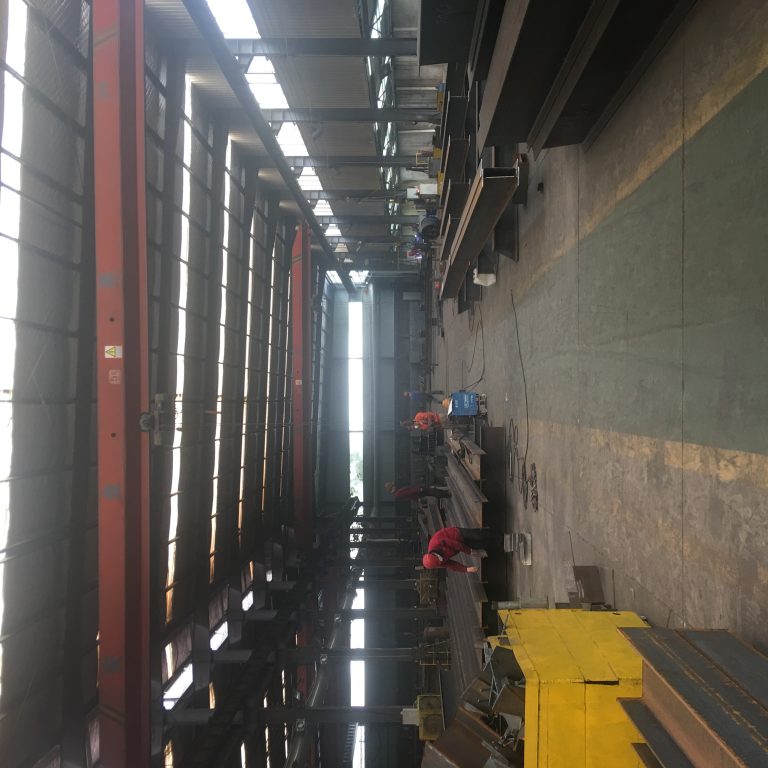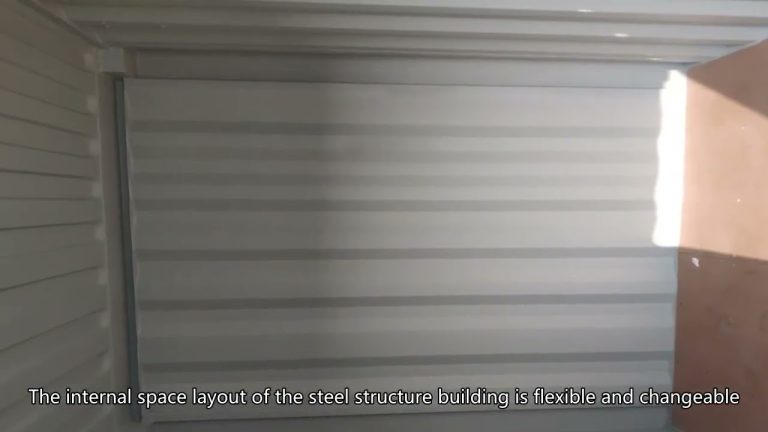The role of steel structures in the development of smart buildings and smart cities
Table of Contents
Benefits of Using Steel Structures in Smart Buildings
Steel structures have played a crucial role in the development of smart buildings and smart cities. The use of steel in construction has become increasingly popular due to its numerous benefits and advantages. In this article, we will explore the benefits of using steel structures in smart buildings and how they contribute to the overall development of smart cities.
One of the key benefits of using steel structures in smart buildings is their durability and strength. Steel is known for its high tensile strength, which makes it an ideal material for constructing tall buildings and structures. Steel structures are able to withstand extreme weather conditions, seismic activities, and other external forces, making them a reliable and long-lasting option for smart buildings.
In addition to their strength, steel structures are also lightweight and flexible, allowing for greater design flexibility and creativity in smart building construction. Steel can be easily shaped and molded into various forms and sizes, making it a versatile material for architects and designers to work with. This flexibility allows for the creation of unique and innovative smart building designs that are both aesthetically pleasing and functional.
Another benefit of using steel structures in smart buildings is their sustainability and environmental friendliness. Steel is a highly recyclable material, with a high recycling rate that makes it a sustainable option for construction projects. By using steel structures in smart buildings, developers can reduce their carbon footprint and contribute to a more sustainable and eco-friendly built environment.
Furthermore, steel structures are cost-effective and time-efficient compared to traditional building materials. The prefabricated nature of steel components allows for faster construction times and reduced labor costs, making steel structures a cost-effective option for smart building projects. Additionally, steel structures require minimal maintenance and upkeep, saving developers time and money in the long run.

Steel structures also offer superior fire resistance compared to other building materials, making them a safer option for smart buildings. Steel does not burn or contribute to the spread of fires, providing an added layer of protection for occupants in smart buildings. This fire resistance can help prevent the loss of life and property in the event of a fire, making steel structures a reliable and secure choice for smart building construction.
In conclusion, the benefits of using steel structures in smart buildings are numerous and significant. From their durability and strength to their sustainability and cost-effectiveness, steel structures play a crucial role in the development of smart buildings and smart cities. By incorporating steel structures into smart building projects, developers can create innovative, sustainable, and safe structures that contribute to the overall development of smart cities. Steel structures are truly a cornerstone of modern construction and are essential for the advancement of smart building technology.
Steel Structures: Key Component in the Evolution of Smart Cities
Steel structures have played a crucial role in the development of smart buildings and smart cities. As urban populations continue to grow, the demand for sustainable and efficient infrastructure has become increasingly important. Steel, with its strength, durability, and versatility, has emerged as a key component in the construction of modern buildings and cityscapes.
One of the main advantages of steel structures is their ability to support innovative architectural designs. The strength-to-weight ratio of steel allows for the creation of large, open spaces without the need for bulky support columns. This flexibility in design has enabled architects to push the boundaries of what is possible in building construction, resulting in iconic structures that define the skyline of many cities around the world.
In addition to their aesthetic appeal, steel structures also offer practical benefits in terms of sustainability and energy efficiency. Steel is a highly recyclable material, with a recycling rate of over 90%. This means that steel structures can be dismantled and repurposed at the end of their lifecycle, reducing the environmental impact of construction projects. Furthermore, steel buildings can be designed to maximize natural light and ventilation, reducing the need for artificial lighting and heating, and lowering energy consumption.
The use of steel structures in the construction of smart buildings has also enabled the integration of advanced technologies for improved building performance and occupant comfort. Smart buildings are equipped with sensors and automation systems that monitor and control various building functions, such as lighting, heating, and air conditioning, to optimize energy usage and create a more comfortable indoor environment. Steel structures provide a stable and reliable framework for the installation of these technologies, ensuring that smart buildings operate efficiently and effectively.
As smart buildings become more prevalent, the concept of smart cities has also gained traction as a way to create sustainable and livable urban environments. Smart cities leverage technology and data to improve infrastructure, transportation, and public services, with the goal of enhancing quality of life for residents. Steel structures play a critical role in the development of smart cities by providing the necessary framework for the construction of smart buildings, as well as other key infrastructure such as bridges, tunnels, and transportation hubs.
The integration of steel structures in the evolution of smart cities has the potential to revolutionize urban living in the 21st century. By combining the strength and durability of steel with the latest advancements in technology and sustainability, cities can create efficient and resilient built environments that meet the needs of a growing population. From iconic skyscrapers to sustainable transportation systems, steel structures are at the forefront of shaping the future of urban development.
In conclusion, steel structures are a key component in the development of smart buildings and smart cities. Their strength, durability, and versatility make them an ideal choice for modern construction projects, while their sustainability and energy efficiency benefits align with the goals of creating sustainable and livable urban environments. As cities continue to evolve and grow, steel structures will play an essential role in shaping the built environment of the future.







